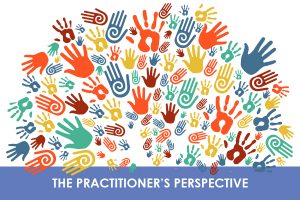Exploring Equity Issues - Blog

Creating a Welcoming Environment for Immigrant Students
By Lisa Tabaku
Center for Education Equity Advisory Board Member; Principal Researcher, AIR
May 2017
 On November 28, 2016, the Southern Poverty Law Center released The Trump Effect: The Impact of the 2016 Presidential Election on our Nation’s Schools, which presented responses by K-12 educators to its online survey about the effects of the campaign and its aftermath on students in U.S. schools. Sadly, the report documented blatant student-on-student aggression against marginalized students in many schools. It provided evidence of the fear and anxiety immigrant students felt about their and their families’ futures.
On November 28, 2016, the Southern Poverty Law Center released The Trump Effect: The Impact of the 2016 Presidential Election on our Nation’s Schools, which presented responses by K-12 educators to its online survey about the effects of the campaign and its aftermath on students in U.S. schools. Sadly, the report documented blatant student-on-student aggression against marginalized students in many schools. It provided evidence of the fear and anxiety immigrant students felt about their and their families’ futures.
I have spent many years working in districts, schools, and classrooms as an advocate for immigrant students, and as a PreK-12 technical assistance provider and researcher for students who come to U.S. schools speaking languages other than English. In my many years of experience, I have found that lack of acceptance, bullying, fear, and anxiety have been a part of many immigrant children’s experiences. It is the rare school that has taken on the arduous and ongoing work of ensuring a safe, equitable, linguistically, and culturally affirming place for immigrant students to learn and grow. Instead, as the SPLC study bears out, recent events in American politics have led to environments even more precarious for our immigrant students to learn in, and even more challenging for our school leaders and teachers to make more inviting and safer.
What have I seen and heard lately? Teachers from coast to coast have shared stories with me. At one elementary school, I listened to a teacher cry as she described the worry and anxiety of small children who are afraid that their parents will be sent away. I listened to a high school social studies teacher telling me that he is unable to discuss the new president with his class because there is so much discord, fear, and ill-will that he cannot engage his students in a calm conversation about the topic. I heard just recently from a teacher whose young student was so traumatized by the deportation of an older brother that his behavior mimicked that of a stroke victim, unable to respond to stimuli around him. It was only after the boy’s mother had settled the older brother with relatives in the country of deportation that the boy returned to some degree of normalcy.
As a result, I am very pleased to see that CEE’s Exploring Equity Issues topic for the month of May is “Creating Welcoming Environments for Immigrant Students.” In a time of ever increasing uncertainty in the lives of our immigrant students, school staff need to work harder to employ policies and practices that ensure immigrant students are welcomed, valued, and seen as the rich fount of knowledge and experience that they are, a fount that can enhance the lives of all of the students in the school.
My daughter is a fairly new teacher. She works in a high-poverty elementary school, the population of which is predominantly Latino representing families from Central America. She finds that her children are more uneasy than ever as a result of recent, aggressive immigration policies and enforcement. She also finds students who at very young ages voice biased comments about children different from themselves.
I am proud of my daughter for realizing that her job is not only the teaching of reading, writing, and arithmetic. She knows that she must also devote attention to the social curriculum. Every two weeks (as a much-needed, constant reminder to her students in the face of events outside her classroom), she squeezes in time for read-alouds of quality children’s literature that speak to issues of fairness, justice, and empathy.
My daughter turns to the Social Justice Books website, a Teaching for Change Project, to find anti-bias children’s books. For older students, Newsela.com has a collection of text sets called A Mile In Our Shoes. A reading initiative of Newsela, in partnership with Teaching Tolerance and Donors Choose, A Mile In Our Shoes promotes empathy through reading using texts that address different perspectives and lived experiences. These stories are about rural communities and refugees, Native Americans and immigrants, veterans and Muslims, groundbreaking women, and courageous people with disabilities.
To create welcoming environments for immigrant students in the current anti-immigrant climate, one small step within the reach of every teacher is to read, discuss, and raise awareness by sharing quality books and news articles that teach compassion, kindness, and mutual respect.
The Center for Education Equity (CEE) at MAEC is inviting members of our advisory board, partners, and other colleagues to share their views on current equity issues. Their opinions do not necessarily reflect CEE’s views or those of the Department of Education and we do not necessarily endorse any products or resources they promote.
